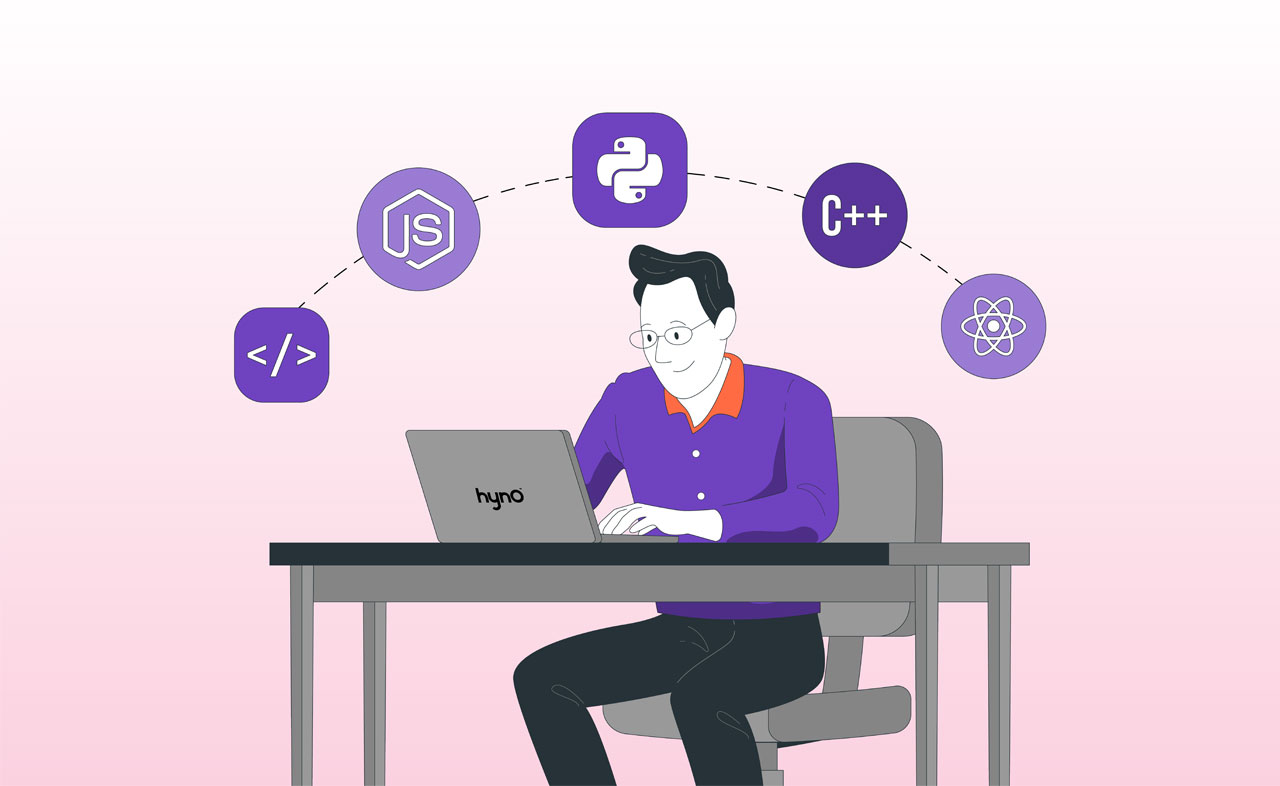
Skills
The skills section of a resume is an essential part that highlights the candidate's core competencies and technical abilities. For an experienced developer, this section is critical as it showcases the breadth and depth of their expertise. Here are some tips and examples for creating an impactful skills section, dedicated to highlighting the best of the remote developer’s abilities, in a resume.
Knowledge depth and duration of use of skills
When it comes to building a competitive yet strong and meaningful resume, writing about your
knowledge and skills is essential, but that alone is not enough. Stating the duration of how
long has one employed the use of the mentioned skills, and how it led to efficient
problem-solving, is equally important in a resume. Because that’s what employers want to see
- how have you applied those skills in real-world situations and the results you've
achieved.
One of the effective ways to demonstrate your skills is to provide a detailed supplementing
information in your resume. Instead of simply writing about your skills, provide specific
examples of how you've used them to complete successful projects, solve problems, or achieve
objectives. Ensure that the skills you have mentioned are associated with the project you
have worked on as a tangible measure upon which employers can vet your expertise.
Detailed Implementation of skills in projects
To ensure that your resume stands out, it's essential to share your most relevant skills by listing out your project where you showcase them on how you've used them to complete successful projects. It includes highlighting your role in a specific project, sharing details about your responsibilities, and describing how your knowledge was integral to achieving the project's objectives. Make this section as detail oriented as possible. You can also share your work experience about the remote tools you have used.
Rate your level of proficiency in various skills
Mention your proficiency level of each skill, and ensure that the projects you showcase prove the same. It helps the employer to understand the level of expertise and experience of the candidate in that skill. Use a numeric, grade, or meter-based scale as a metric to showcase the same. This can help employers match you with roles and opportunities that best fall under your level of competency.
Pro Tips
Here are a few things that you shouldn’t miss out on including in your skillset section :
- Follow a ‘Technical Skills first’ hierarchy and back them up with relevant soft-skills that together achieved project goals.
- Prioritize the most relevant skills as per the job role you’re applying for. Review the job description and identify the required skills to tailor the section accordingly.
- Use relevant keywords that reflect the skills required for the job position. It helps the applicant tracking system (ATS) to scan the resume and increase the chances of getting selected for an interview.
- Categorize skills into sub-sections to organize them properly. For example, a full-stack developer can categorize their skills into frontend, backend, and database-related sections.
- Showcase soft skills like teamwork, leadership, and communication that are considered essential assets for remote developers. Include these skills to showcase your ability to work in a team and effectively communicate with stakeholders.
Keep away from these things to avoid a cluttered skillset section:
- Avoid irrelevant skills, unrelated to the job position. It takes up valuable space and can make the employer lose interest.
- Don't include outdated skills that are no more in demand in the current market. It is better to focus on displaying expertise and proficiency in the latest-most technologies and tools.
- Avoid using technical jargon or abbreviations that the employer may not understand. It is better to use plain language that is easy to understand.
- Avoid exaggerating your proficiency level of the skills. It can negatively impact the employer's trust and reduce the chances of getting selected.
Examples :
Full-Stack Developer
Frontend (2022-2023) : Angular, ReactJS, VueJS
Backend (2020-2023) : NodeJS, Ruby on Rails, Django
Project highlight : Contributed in a finance app's backend using NodeJS
Database (2013-2020) : MySQL, MongoDB, PostgreSQL
Project highlight : Excelled in MySQL as database in different projects such as finance app, web app, etc
Proficiency :
- Expert in ReactJS, NodeJS, and MySQL.
- Intermediate in Ruby on Rails, Angular, and MongoDB.
- Beginner in VueJS and PostgreSQL.
Soft Skills : Teamwork, communication, leadership, time management.
DevOps Engineer
Collaborated with a team on Python for web development for 1 year for a fintech app.
Cloud Services (2021-2023) : AWS, Azure, GCP
Project highlight : Worked in a team of 5 people to build a cloud server using AWS for a gaming app.
Automation Tools (2019-2021) : Ansible, Chef, Puppet, Containerization: Docker, Kubernetes
Project highlight : Contributed to container management using Kubernetes & ansible automation tool on AWS for building a large scale website.
Programming Languages (2017-2019) : Bash, Python, Ruby
Project highlight : Worked on a python project for web development of a gaming site.
Proficiency :
- Expert in AWS, Ansible, and Docker.
- Intermediate in Azure, Chef, Python, and Kubernetes.
- Beginner in GCP, Puppet, Bash, and Ruby.
If you enjoyed this piece, we've crafted a related article delving into How to unlock digital potential by crafting effective Flutter Developer Job Descriptions? Explore it here